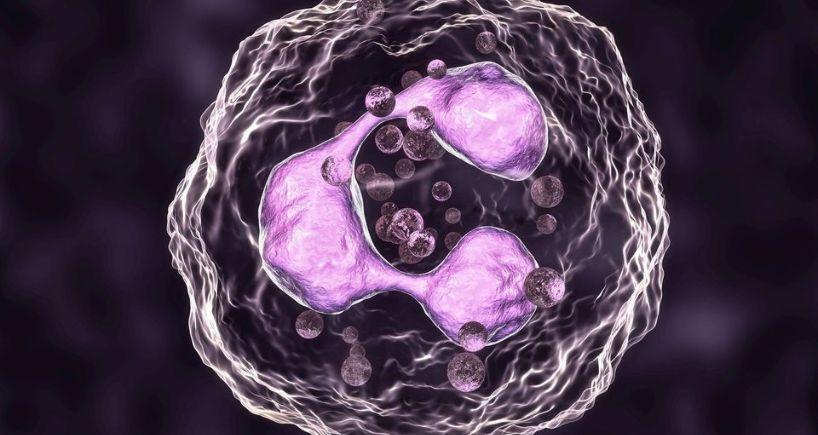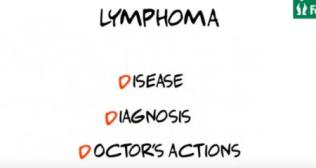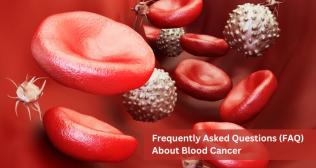
Neutrophils: Overview, Count, and Functions
Neutrophils are the most abundant immune-proficient cells in the peripheral blood, constituting about 50–70% of all white blood cells. They are produced in the bone marrow, and most of them are released into the systemic circulation in case of any infection so they can rapidly reach the site of the infected tissue/organ.
These cells are capable of phagocytosis and produce reactive oxygen species to kill the invading organisms. They have a lifespan of 6–8 hours in the bloodstream and are highly effective at locating, attacking, and neutralizing pathogens. The characteristic feature in the structure of neutrophils is their multilobe nucleus, segmented into three to five lobes. Hence, these cells are also known as polymorphonuclear leucocytes. The cytoplasm contains granules filled with enzymes and antimicrobial proteins that are essential in the fight against infections.
Neutrophil Counts and Associated Diseases
Neutrophil count, also known as absolute neutrophil count (ANC), is a critical indicator of one’s immune health. It can be an indicator of how the body responds to infection, inflammation, stress, or bone marrow function.
- Neutropenia: Neutropenia is a condition where neutrophil count is below the normal range, thus leading to poor function of the immune system. It occurs when neutrophil count falls below 1500 cells per microliter. Since a person’s front-line defense system for infection gets compromised, they will be more susceptible to infections. Neutropenia can be the result of numerous factors, including chemotherapy, cancer, autoimmune diseases, allergic reactions, enlarged spleen, and bacterial, fungal, or viral infections. Severe neutropenia occurs when neutrophil count falls below 500 cells per microliter. These patients are at a higher risk of life-threatening infections and require immediate medical attention.
- Neutrophilia: Contrarily, neutrophilia is an increase in the neutrophil count to greater than 7500 cells per microliter. It is also known as neutrophilic leukocytosis. It occurs when the body experiences stress from infections, inflammation, or other factors, prompting the release of neutrophil reserves from the bone marrow into the bloodstream. In certain cases, neutrophilia can also be a result of or response to certain medications, diseases (such as chronic myeloid leukemia), or lifestyle habits (such as smoking). Neutrophilia is often a short-lived and self-limiting response to an infection or inflammation.
Thus, to sum up, monitoring neutrophil counts is vital, especially in individuals undergoing treatment for a condition that can affect their immune system. These counts can provide valuable inferences in the ability of the body to fight infections and can be fundamental in guiding clinical decisions for better patient care.
Functions of Neutrophils
Often claimed as the body’s front-line warriors, the key function of neutrophils is identifying, attacking, and destroying harmful microorganisms. It can be achieved through the following mechanisms:
- Phagocytosis: It is a process wherein neutrophils engulf and digest proteins. It is one of the most well-known functions of neutrophils. The neutrophils encounter foreign bodies and engulf them into phagosomes, a specialized component. These phagosomes, after fusing with lysosomes, which contain digestive enzymes, break down the invading pathogen.
- Degranulation: Degranulation is a process wherein granules inside the neutrophils containing enzymes, antimicrobial proteins, and toxic substances get released into the extracellular space. These granules directly kill the invading pathogen or create a hostile environment, thereby preventing their spread and multiplication.
- Neutrophil Extracellular Traps (NETs): In addition to the above functions, neutrophils release neutrophil extracellular traps, web-like structures composed of antimicrobial proteins and DNA. This structure traps and kills the pathogens outside the cell. It is a more effective way to kill the invading pathogen, where neutrophils cannot migrate easily.
- Production of Cytokines: Cytokines are signaling molecules that communicate with other immune cells. These cytokines are produced by neutrophils, which help orchestrate a coordinated immune response, recruiting other immune cells, like macrophages and lymphocytes, to the site of infection. It ensures that neutrophils play a critical role in shaping the overall immune response in addition to the initial response.
The Balancing Function of Neutrophils
Neutrophils play a dual role, both protective and potentially harmful. In addition to destroying invading pathogens through a variety of mechanisms discussed above, they also contribute to inflammation, and their prolonged or excessive activation can lead to exacerbation of tissue damage and diseases. Thus, it is crucial to maintain a delicate equilibrium in neutrophil function.
Neutrophils play a crucial role in the fight against infections, but their activity needs to be carefully controlled. Overreaction of neutrophils to the body can cause tissue damage and worsen chronic inflammatory disorders like IBD, COPD, and rheumatoid arthritis. Under these circumstances, the body’s immune system unintentionally attacks its own tissues, and neutrophils do not work to protect but rather aid in the devastation.
Neutrophils have also been linked to the advancement of malignancy. By targeting tumor cells, these cells usually aid in stopping the spread of cancer, but occasionally, the tumor microenvironment might take advantage of them to encourage the growth and metastasis of the tumor. Scientists are currently investigating strategies to harness or control neutrophil activity for therapeutic reasons in order to address the dual role of neutrophils in cancer.
Conclusion
Neutrophils are integral to maintaining good health due to their ability to rapidly respond to infections, pathogen destruction, and coordination with other immune cells. In addition to their powerful anti-inflammatory role, their activity must be regulated to prevent ancillary damage to the body’s own tissue. Decoding the neutrophil functions at the genetic level is essential to develop novel therapies for various immune-related disorders. Thus, neutrophils can undoubtedly lead to advancements in understanding disease pathology and improving the management of infections, inflammation, and cancer.
Popular Searches :
Hospitals: Cancer Hospital in Delhi | Best Heart Hospital in Delhi | Hospital in Amritsar | Hospital in Ludhiana | Hospitals in Mohali | Hospital in Faridabad | Hospitals in Gurgaon | Best Hospital in Jaipur | Hospitals in Greater Noida | Hospitals in Noida | Best Kidney Hospital in Kolkata | Best Hospital in Kolkata | Hospitals in Rajajinagar Bangalore | Hospitals in Richmond Road Bangalore | Hospitals in Nagarbhavi Bangalore | Hospital in Kalyan West | Hospitals in Mulund | Best Hospital in India | | Cardiology Hospital in India | Best Cancer Hospital in India | Best Cardiology Hospital in India | Best Oncology Hospital In India | Best Cancer Hospital in Delhi | Best Liver Transplant Hospital in India
Doctors: Dr. Rana Patir | Dr. Rajesh Benny | Dr. Rahul Bhargava | Dr. Jayant Arora | Dr. Anoop Misra | Dr. Manu Tiwari | Dr. Praveer Agarwal | Dr. Arup Ratan Dutta | Dr. Meenakshi Ahuja | Dr. Anoop Jhurani | Dr. Shivaji Basu | Dr. Subhash Jangid | Dr. Atul Mathur | Dr. Gurinder Bedi | Dr. Monika Wadhawan | Dr. Debasis Datta | Dr. Shrinivas Narayan | Dr. Praveen Gupta | Dr. Nitin Jha | Dr. Raghu Nagaraj | Dr. Ashok Seth | Dr. Sandeep Vaishya | Dr. Atul Mishra | Dr. Z S Meharwal | Dr. Ajay Bhalla | Dr. Atul Kumar Mittal | Dr. Arvind Kumar Khurana | Dr. Narayan Hulse | Dr. Samir Parikh | Dr. Amit Javed | Dr. Narayan Banerjee | Dr. Bimlesh Dhar Pandey | Dr. Arghya Chattopadhyay | Dr. G.R. Vijay Kumar | Dr Ashok Gupta | Dr. Gourdas Choudhuri | Dr. Sushrut Singh | Dr. N.C. Krishnamani | Dr. Atampreet Singh | Dr. Vivek Jawali | Dr. Sanjeev Gulati | Dr. Amite Pankaj Aggarwal | Dr. Ajay Kaul | Dr. Sunita Varma | Dr. Manoj Kumar Goel | Dr. R Muralidharan | Dr. Sushmita Roychowdhury | Dr. T.S. MAHANT | Dr. UDIPTA RAY | Dr. Aparna Jaswal | Dr. Ravul Jindal | Dr. Savyasachi Saxena | Dr. Ajay Kumar Kriplani | Dr. Nitesh Rohatgi | Dr. Anupam Jindal |
Specialties: Heart Lung Transplant | Orthopedic | Cardiology Interventional | Obstetrics & Gynaecology | Onco Radiation | Neurosurgery | Interventional Cardiology | Gastroenterologist in Jaipur | Neuro Physician | Gynecologist in Kolkata | Best Neurologist in India | Liver Transfer



















